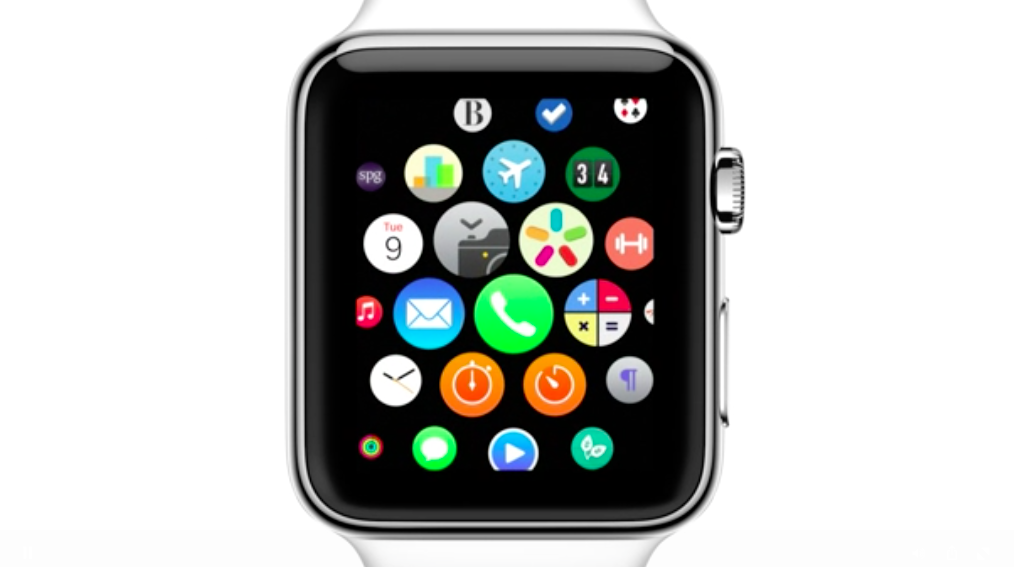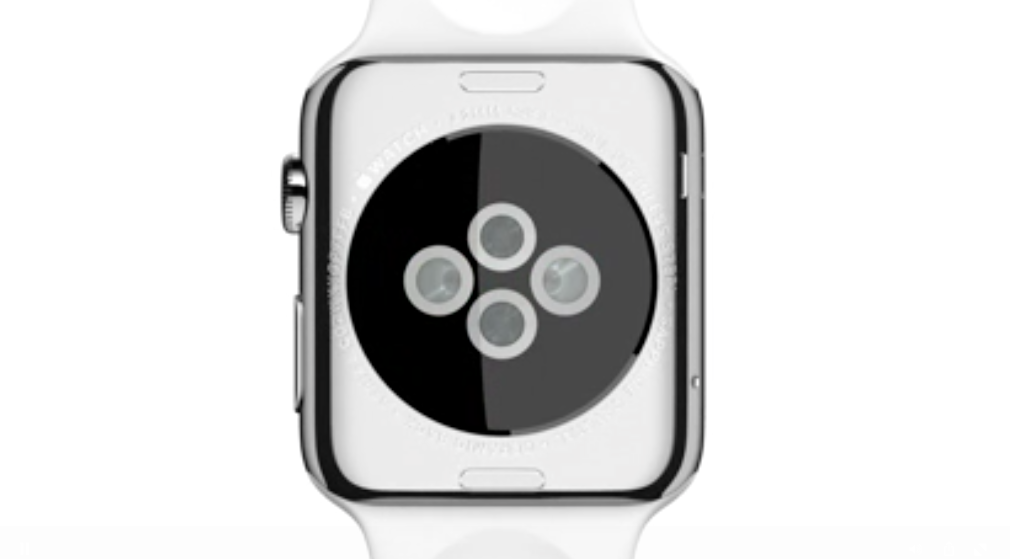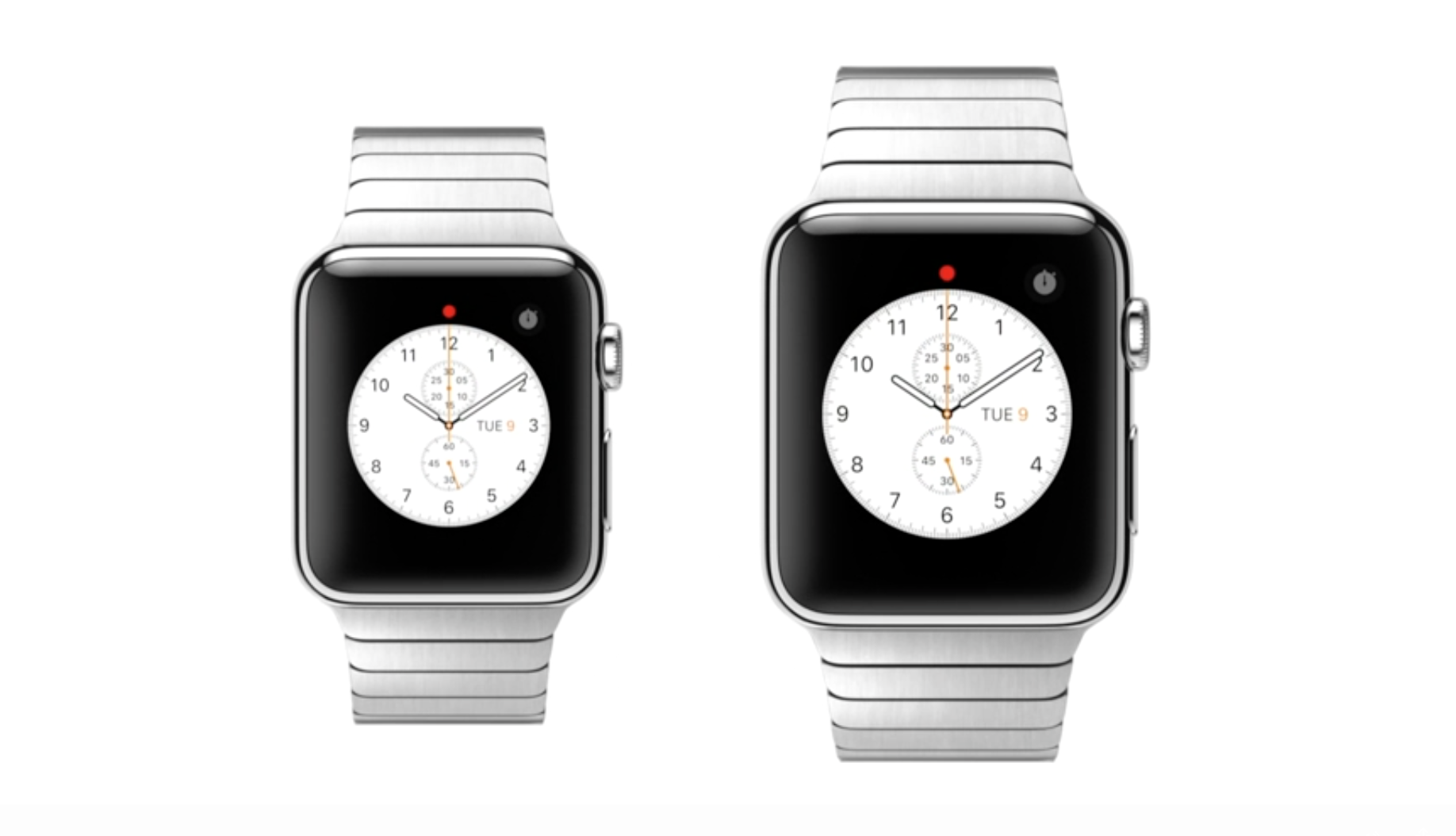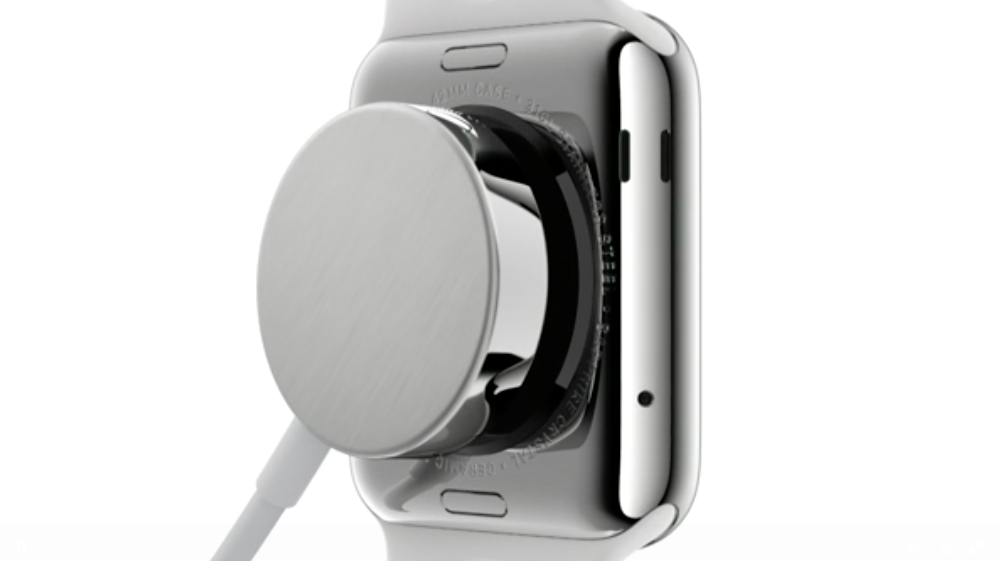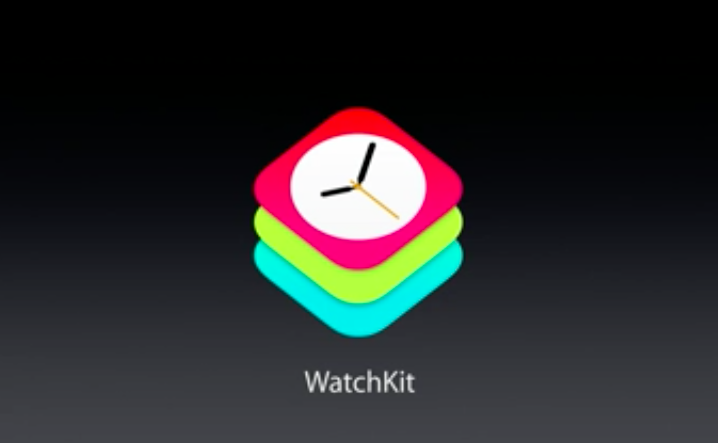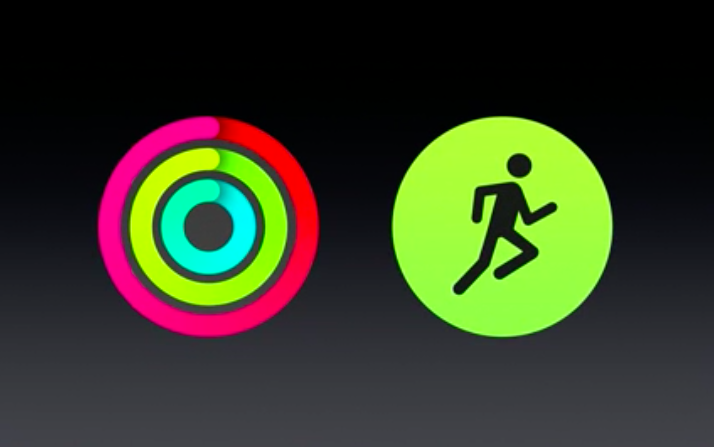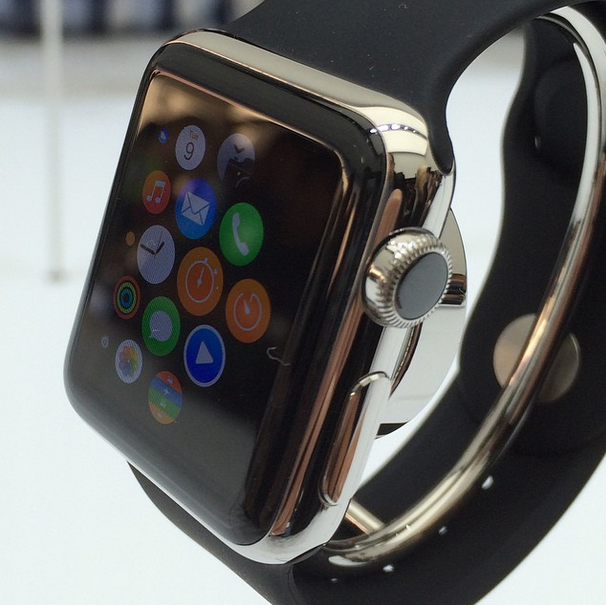
Apple has announced its first wearable device, aptly titled Apple Watch. It isn’t quite circle and not quite square, but a squircle of sorts. It is, according to Apple, “the most personal device we’ve ever created.”
The watch has a metal chassis and is “incredibly customizable. You can find one that reflects your personal style and taste. It’s an intimate way to connect,” according to CEO Tim Cook.
Apple Watch uses a “digital crown,” a side-placed dial that “translates rotary movement into digital data.” While it does have a touchscreen, the dial is the primary input mechanism for the watch.
The device reportedly lasts all day (though battery size has not been revealed), and features a fluid interface and familiar home screen that can be navigated using either input method. Apple Watch also has voice capabilities, with replies and commands available for many of the watch actions.
The Apple Watch also encourages sharing with other Watch users through gestures. Aside from voice and text messages, Watch will support something called ‘Digital Touch,’ allowing users to draw basic designs to send to other users over WiFi.
The screen is covered with a sapphire composite, and is comprised of a flexible OLED panel.
In addition to a gyroscope and accelerometer in the device, there are infrared sensors on the back that track heart rate. Using a connected iPhone, the Apple Watch uses WiFi or GPS to take better and more accurate readings for a variety of functions, from exercise to sharing location with friends and family.
Apple will provide six different straps which are easily replaceable. From a fitness-focused sweat-resistant plastic to a bevy of leather and metal solutions, the number of choices here mirrors Apple’s MacBook line rather than its very curated iPhone and iPad lineup.
In addition to coming in two sizes for people with different wrist sizes, there will be both a traditional stainless steel version, as well as a hardier athlete-focused version and an 18-karat gold version. These are called Apple Watch, Watch Sport and Watch Edition respectively.
The Apple Watch will also use inductive charging with a magnetic connector, similar to the way its MacBook line uses MagSafe.
‘Glances’ are the mechanism Apple has developed to allow for quick looks at small bits of information. Swiping up from the bottom of the watch face, similar to iOS’s Control Panel, brings up the latest Glances.
In terms of replying to incoming messages, Apple’s ‘Quick Words’ analyzes the text on screen to determine a few appropriate responses. Siri has also been built into Apple Watch, and the responses will be the same as on the iPhone or iPad.
Of course, developers will have access to create app experiences for the Apple Watch using WatchKit, a new SDK to optimize new or existing apps for the wearable. By default, all notifications from the iPhone will be mirrored on the Apple Watch, but users will have full control over what is seen on the screen.
Focusing on fitness, the Apple Watch has two built-in apps, one dubbed Fitness, which aggregates data from a variety of sensors; and Workout, which is focused on helping competitive athletes track their accomplishments.
The Apple Watch will function as a remote control for the Apple TV and a remote shutter for the iPhone’s camera, too. Finally, Apple Pay, the recently-announced payment solution for iPhone 6 and iPhone 6 Plus, will also work with the Apple Watch.
An iPhone will be required to use Apple Watch, going back to the iPhone 5, 5c and 5s. It will be available starting in early 2015 starting at $349.
(Image source via Gadjo Sevilla)
MobileSyrup may earn a commission from purchases made via our links, which helps fund the journalism we provide free on our website. These links do not influence our editorial content. Support us here.

